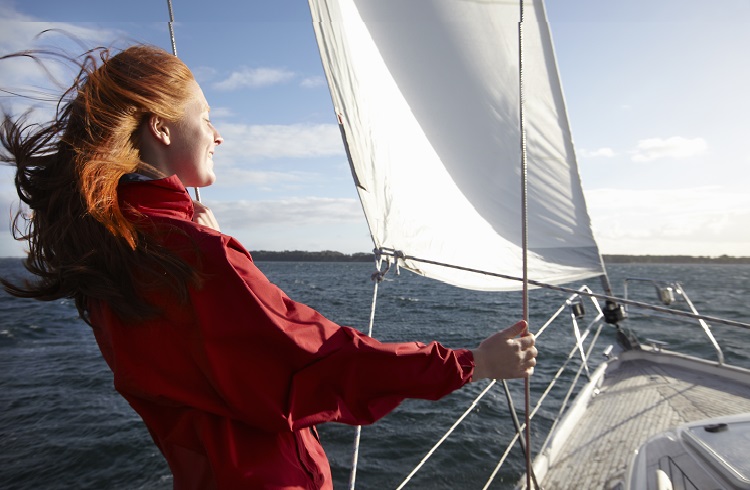Cruise Ship Safety: 6 Essential Travel Tips You Need to Know
Though the likelihood of a cruise ship sinking or running aground is rare, it does happen. Here are some safety tips to keep in mind next time you're out on the high seas.
 Photo © Getty Images/goinyk
Photo © Getty Images/goinyk
- Is cruising safe?
- Polar cruising safety tips
- Read your cruise ship's safety plan
- Reduce panic in an emergency
- Never jump overboard on a cruise ship
- Beware of stormy seas on a cruise ship
Is cruising safe?
The notorious sinking of the Costa Concordia in 2012 has prompted many people to ask this question. The simple answer is yes, cruising is safe if you're prepared and take reasonable steps to look after your own safety.
Cruising has grown steadily in popularity over the past few decades. It was one of the first industries to bounce back after the COVID-19 pandemic, and according to the Cruise Lines International Association (CLIA), global cruise capacity is expected to grow at least another 10% between 2024 and 2028. And cruises are one of the safest ways to travel, with an overall excellent safety record.
Sensibly, the cruise industry puts a great deal of effort into passenger safety. Following the Concordia incident, the International Convention for the Safety of Life at Sea adopted a new regulation requiring the lifeboat drill (also known as a muster) be held prior to or immediately after departure. Since the pandemic, many cruise lines are offering a virtual muster rather than an in-person muster.
Prior to this amendment, the muster could be held within 24 hours of departure. In the Concordia incident, many passengers had just boarded and had yet to attend a muster, which undoubtedly added to the confusion and panic.
Polar cruising safety tips
Fortunately, cruise ships don't sink all that often. Loss of life is rare and the chance you'll have to head for the lifeboats is pretty slim, but not unheard of.
The most significant recent cruise ship sinking prior to the Costa Concordia was the Antarctic cruise ship MV Explorer in 2007: The icebreaker hit an iceberg a little too hard, started taking on water and listing while it was 400 nautical miles south of South America.
150 people onboard had to put on special cold-weather suits and take to the lifeboats. Fortunately, there were other cruise ships in the region and despite several hours in sub-zero temperatures, no one was lost.
Arctic and Antarctic waters are inherently dangerous, but also incredibly spectacular and are attracting more and more cruise ships. As the number of ships rises, the chances something might happen also rise. The MV Explorer was the most serious of several groundings and incidents in polar waters in recent years, including the Polar Star in 2011 and Ocean Nova in 2009, where all passengers were safety evacuated, and the MV Ocean Explorer in 2023, where passengers were able to stay aboard – a much more common situation.
Read your cruise ship's safety plan
When you get onboard for the first time, check out that evacuation map on the back of your cabin door. Physically follow the route to your lifeboat station, so you're familiar with where you're going if you have to do it for real.
Take an interest in the lifeboat drill on the first day. If you are in good physical shape, ask a crew member to show you how to operate the launching mechanism. If your ship really is sinking, you may be facing a situation without much help from the crew as they're under a lot of stress and may already be directing the rescue from a lifeboat. So, knowing how to launch the lifeboat could save your life.
If the order comes to abandon ship, follow the instructions of the crew as calmly as you can. The captain knows that getting a few hundred people off a ship takes time. He won't wait until the last minute to get you off, so, no need to push and shove and panic.
Reduce panic in an emergency
One of the biggest problems with abandoning a ship is that many of the passengers are elderly. A younger, fitter person may be confident they can get themselves into a lifeboat, but the elderly often are not. This causes a lot of apprehensions and even panic. Do your best to assure those people if you are among the more able-bodied and help them when you can. Less panic means a better chance everyone will survive, so it's in your best interests to keep everyone calm.
Planning a cruising adventure? Find out how travel insurance can cover lost or stolen baggage, sudden illness, trip cancellation, or other mishaps.
Never jump overboard on a cruise ship
Never jump overboard into the ocean. It's usually a long way down and water isn't soft when you're dropping like a stone. Out at sea, the deeper water will be colder than you expect, and that will affect your ability to survive. It will also be very hard for the crew to spot you and rescue you.
Beware of stormy seas on a cruise ship
Cruise liners are designed to take incredible punishment from the ocean and stay upright. But if you're aboard a liner during a severe storm it's sensible to take shelter.
Don't go to the bar where the chairs and tables and maybe the piano are sliding from side to side as they did on this cruise ship in 2008. Do not go out on deck – 50 knot winds will whip you off your feet and maybe even throw you overboard. It may be best to stay in your cabin and be comforted by the knowledge that modern cruise liners must pass very strict stability tests before they're allowed to operate.
Related articles
Simple and flexible travel insurance
You can buy at home or while traveling, and claim online from anywhere in the world. With 150+ adventure activities covered and 24/7 emergency assistance.
Get a quote

1 Comment
Hi - I am looking into getting travel insurance for my upcoming cruise- I am wondering if this covers my family wile on the water and in bermuda? Thank you!